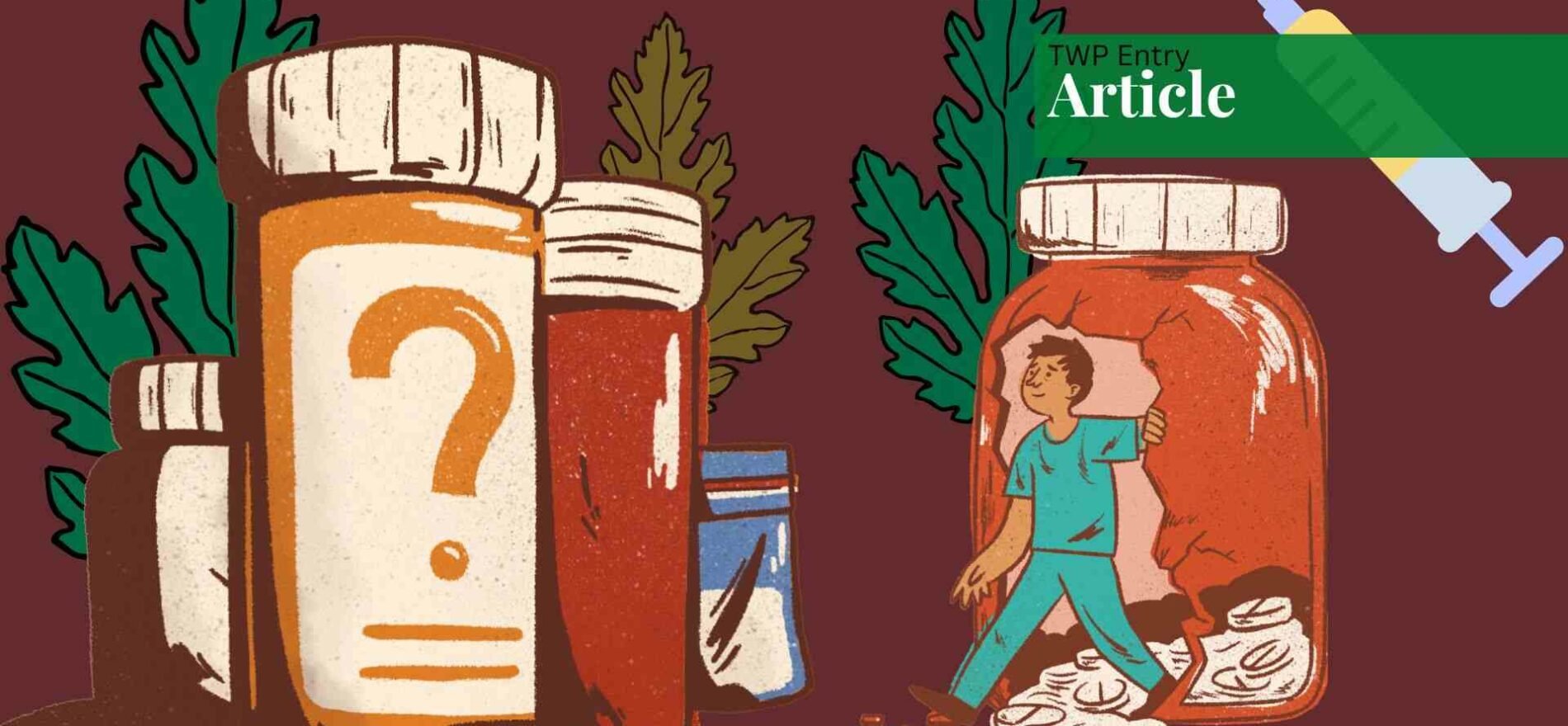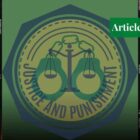Mr Syed Salman Mushtaq Gilani has a Master's in Development Studies. He has previously worked with the Department of Home & Tribal Affairs and is currently working at the Sarhad Rural Support Programme
Before the 18th Amendment
Post-independence, Pakistan relied on the Drug Act of 1940, which regulated the import, export, and distribution of drugs in the subcontinent. However, due to advancements in technology and scientific methods, the Drug Act of 1940 had to be modified to give the following three rules:
- The Drugs (Licensing, Registration & Advertising) Rules, 1976.
- The Drugs (Import & Export) Rules, 1976.
- The Drugs (Labeling & Packing) Rules, 1986.
The Drugs Act 1976 brought major changes like banning the sale of drugs on streets, making it impossible to sell them without a license. Along with this, it permitted the establishment of a drug testing facility (Forensic Science Lab) and a drug court with a chairman (equivalent to a high court judge) and two experts from the fields of medicine or pharmacy.
Drug Act: 1940 vs 1976
From a drug regulatory perspective, there are a few key differences between these acts. The Drug Act 1976 was an improvement of the Drug Act 1940:
- In the Drug Act 1940, Magistrates of the first or second class were given authority to investigate drug-related cases in local areas. In many cases, the provincial government could appoint an Excise officer or any class of such officer with powers to be in charge of a police station for investigations that fell under this act. Similarly, the federal government could appoint an officer of the Pakistan Narcotics Control Board or any class of such officer for the role mentioned above.
- In the Drug Act 1976, the federal or provincial government could appoint inspectors with the authority to carry out drug-related investigations and seize illicit drugs, distribution centers, and stores that violate the Act. These inspectors were given tremendous investigative powers to ensure drug control.
- The Drug Act 1976 gave birth to Drug Courts, which were composed of a chairman (equivalent to a high court judge) and two experts from the fields of medicine or pharmacy. Drug-related investigations and judgments would be carried out here, penalizing criminals based on punishments prescribed in the Prohibition Order 1979.
Anti-Narcotics Force Act, 1997
The Anti-Narcotics Force (ANF) was established in 1995 to combat the illicit demand and supply of drugs pouring in from the Afghanistan and Iran borders. ANF is a military organization, having its headquarters in Rawalpindi with five regional directorates at Rawalpindi, Peshawar, Quetta, Lahore, and Karachi. Along with this, ANF has 28 police stations across the country and seven Control of Narcotics Substances (CNS) courts to deal with anti-narcotics cases.
The main points in the Anti-Narcotics Force Act 1997 regarding ANF duties are as follows:
- To inquire, investigate and prosecute all offences related or connected with intoxicants, narcotics, and precursors.
- Trace and freeze the assets.
- Coordinate elimination and destruction of Poppy cultivation.
- Assist other law enforcement agencies and share drug-related information with all national and International agencies.
- Arrange and coordinate training of own staff and members of other law enforcement agencies related to narcotics.
- Maintain liaison with all international narcotics control authorities and represent Pakistan in conferences and seminars.
- Perform any other related functions that may be assigned by the Federal Government.
The Control of Narcotics Substances (CNS) Act 1997 established investigative procedures, penalties, special court parameters, rehabilitation procedures for addicts, and a National Fund of Control for Drug Abuse which would be used in favor of drug control and rehabilitation activities. Rehabilitation was made the domain of provincial governments in the CNS Act of 1997, but ANF also played a positive role here by establishing Model Addiction Treatment & Rehabilitation Centers (MATRCs) providing free support to drug addicts.
The 18th Amendment
The 1973 constitution of Pakistan promised provincial autonomy, providing provincial governments authority, but the Bhutto government succumbed to a coup by Zia-ul-Haq, which derailed any efforts made by the civilian government to bring about provincial autonomy. Powers listed in the concurrent list were at the center’s disposal, which the 18th Amendment abolished and transferred the powers of seventeen ministries to the provinces.
To help support the new provincial ministries and their projects, the 18th Amendment was complemented by the 7th National Finance Commission (NFC) Award, which provided a resource boost to provincial governments. This meant that along with decision-making authority, provinces were also given financial authority over matters related to their jurisdiction. Subjects from the concurrent list like drugs, opium, and medicine were made solely provincial matters, which meant that provinces had to legislate on these subjects now without any interference from the center.
After the 18th Amendment
After the 18th amendment, the Ministry of Health devolved to a provincial level, which meant that provinces now had the authority to create drug-related rules. However, there was still the matter of export, import, and pricing of regulated drugs, which could not be handled at the provincial level. This gave rise to the Drug Regulation Authority Pakistan (DRAP) Act 2012, which improved the Drugs Act 1976.
There was still the matter of non-regulated drugs like homeopathic, which was resolved with the Alternative Medicines & Health Products (Enlistment) Rules 2014. Taking advantage of the authority delegated to the provinces, the provincial governments were quick to devise the following drug rules regarding distribution and sale:
- Punjab Drug Rules, 2007
- Sindh Drug Rules, 2010
- KP Drug Rules, 2017
- Balochistan Drug Rules, 2018
Drug Regulation Authority Pakistan (DRAP) Act, 2012
Devolution of power proved to make tasks easy for the Health Ministry when it came to regulation and legislation, but the pharmaceutical community remained in disarray due to an uncertain environment regarding the import, export, pricing, and licensing of drugs. The provincial assembly passed resolutions, requesting the parliament to make federal-level legislation. To fill this legislative gap, the DRAP was established composed of a Chief Executive Officer and 13 directors to efficiently address the concerns of the pharmaceutical community.
DRAP was also delegated the powers to regulate and prevent misuse of clinical medications. On top of that, DRAP included the establishment of drug testing labs (forensic science) at a provincial level instead of just being at the federal level like in the Drugs Act 1976. The Central Drug Laboratory (CDL) was established in Karachi for analysis and quality assurance of all types of drugs (including alternate medicine).
KP Drug Rules, 2017
The KP Drug Rules, 2017 acts as a successor to the NWFP Drug Rules, 1982 (which was based on the Drugs Act 1976). The new rules further enforce the sale, storage, and licensing rules per DRAP 2012, ensuring the constant presence of specialists that provide drugs only on presentation of a doctor’s prescription.
Furthermore, the cases being investigated by inspectors were further examined by the provincial quality control boards. Apart from the above-mentioned changes, the KP Drug Rules 2017 feature numerous rules and regulations regarding the establishment of pharmacies, medical stores, and wholesale stores, and details regarding their operation and storage facilities.
Anti-Narcotics Act, 2019
This Act came as a replacement for the Control of Narcotic Substances Act 1997. It follows the 18th amendment by devolving anti-narcotic powers from the federal entity ANF to the Narcotics Control Wing headed by the Excise, Taxation, and Narcotics Department. The Anti-Narcotics Act 2019 also allows the establishment of special courts with the permission of Chief Justice Peshawar High Court, which will issue warrants and award punishment per the applicable laws. There is also a mention of the establishment of an Anti-Narcotics Academy in Peshawar, which will aid in training and capacity building of personnel in the Narcotics Control Wing.
According to this Act, the Narcotics Control Wing is to have its police stations throughout KP for anti-narcotics policing. However, until they are all established, excise officials are free to use existing police stations for anti-narcotic actions. Moreover, excise officers have been permitted to search, investigate, or stop a vehicle for investigation without a warrant if they deem the situation requires it, but if there is a misuse of this power, then the officer shall be penalized with fine, imprisonment, or both.
Furthermore, the Anti-Narcotics Act 2019 called for the establishment of a state-of-the-art Khyber Pakhtunkhwa Forensic Science Lab to further aid in decreasing drug abuse. Until the establishment of that lab, the excise department has been permitted use of the already established forensic lab in Hayatabad, Peshawar.
When it comes to drug use in cross-border dealings, coordination with other provinces and the center (ANF) has been assured, so If they were to request investigative access or access to an accused taking refuge in KP then they will be allowed such if it brings progress to their investigation. Lastly, it allows the government to register drug addicts so it can take action to provide rehabilitation and detoxification for them.
Drug User Survey
Misuse and the increasing supply and demand of drugs, especially opioids and ice, among students in Peshawar, are alarming to law enforcement authorities of the region. The last drug user survey in Pakistan was conducted in 2013 by UNODC. As many cases could have gone undocumented, it is to be expected that in these 8-9 years, the number of drug users must have significantly increased.
The UNODC 2013 data shows that:
- Drug dependence severity is highest among opioid users in Khyber Pakhtunkhwa (KP) and Balochistan.
- The most prevalent drug use in the country was recorded in Khyber Pakhtunkhwa (KP), with 10.9% of the population having used illicit drugs in 2012 alone.
- Khyber Pakhtunkhwa (KP) had the highest prevalence of prescription amphetamine use.
- Use of cannabis, opioids, and tranquilizers was the highest in Khyber Pakhtunkhwa (KP), with prevalence rates of 4.7 percent, 5.8 percent, and 2.4 percent respectively. Opiates are used by 1.4 percent of the population, with 140,000 using heroin and 84,000 using opium.
The Drug User Survey (2013) indicated that people over 25 were commonly involved in drugs, but recent studies like that of Ahmad et al (2020) prove that the trend has now been reversed. Pakistan has a greater proportion of youth in its society compared to adults, and drug use is becoming more common in educational institutes.
Students in a study claimed that the use of drugs helps take their minds off problems at home and from the workload at educational institutes. Comments like these hint at a flawed societal structure and unnatural expectations from children that lead to them excluding themselves from society and resorting to societal ills. A study conducted in Punjab also supports the shift in age group by discovering that out of 400 respondents, 38% of substance abusers were aged 25 and below.
If you want to submit your articles, research papers, and book reviews, please check the Submissions page.
The views and opinions expressed in this article/paper are the author’s own and do not necessarily reflect the editorial position of Paradigm Shift.


















